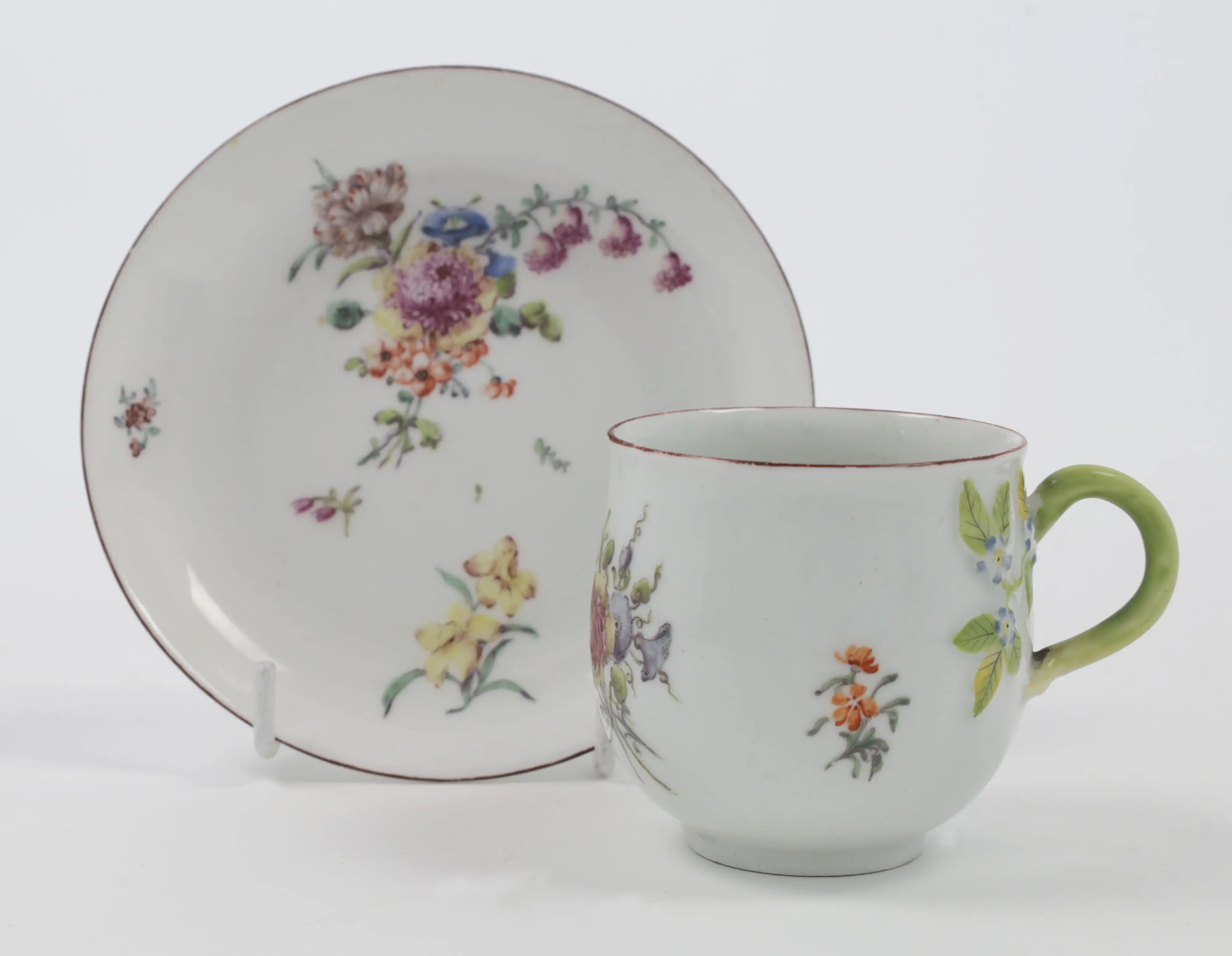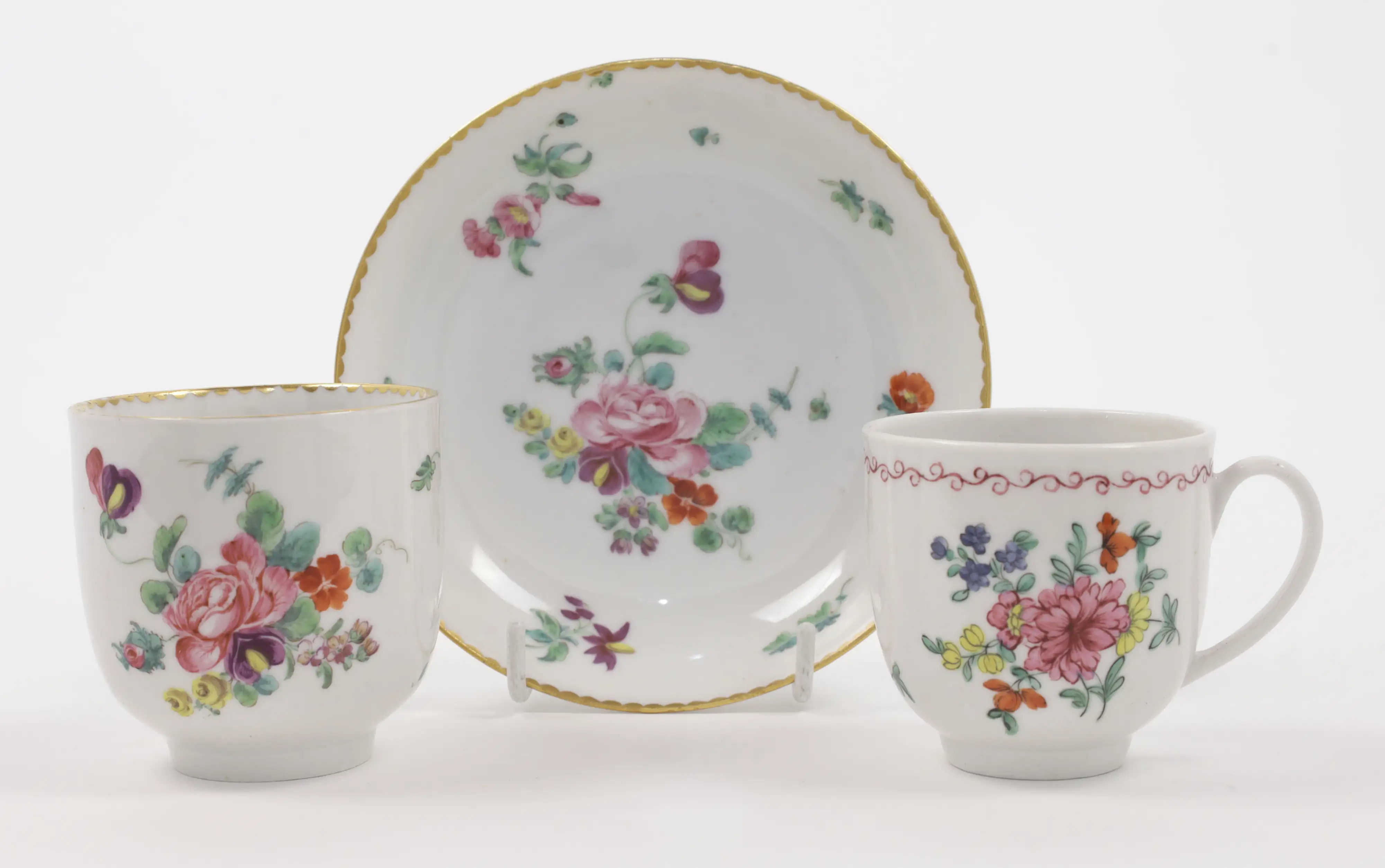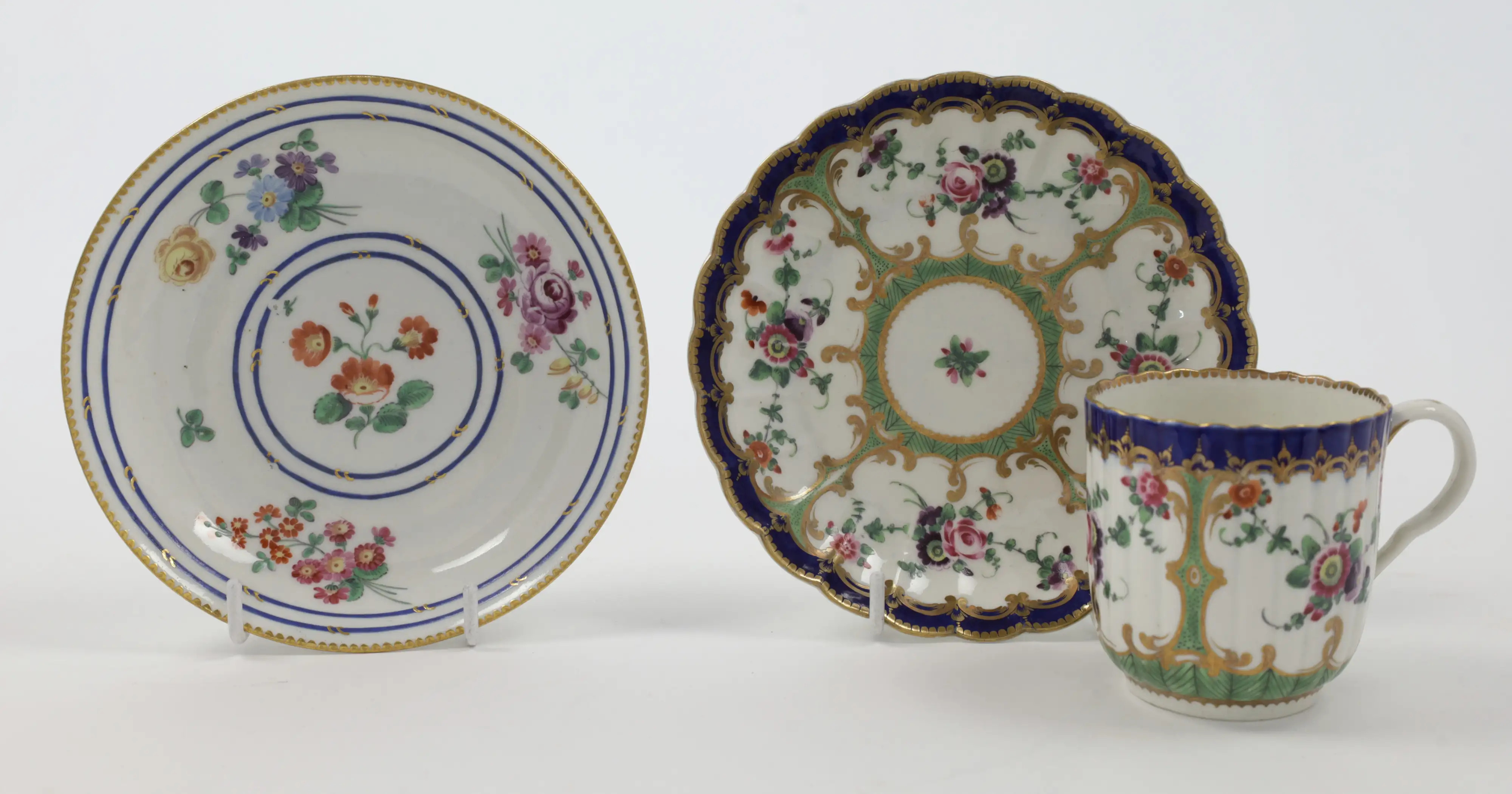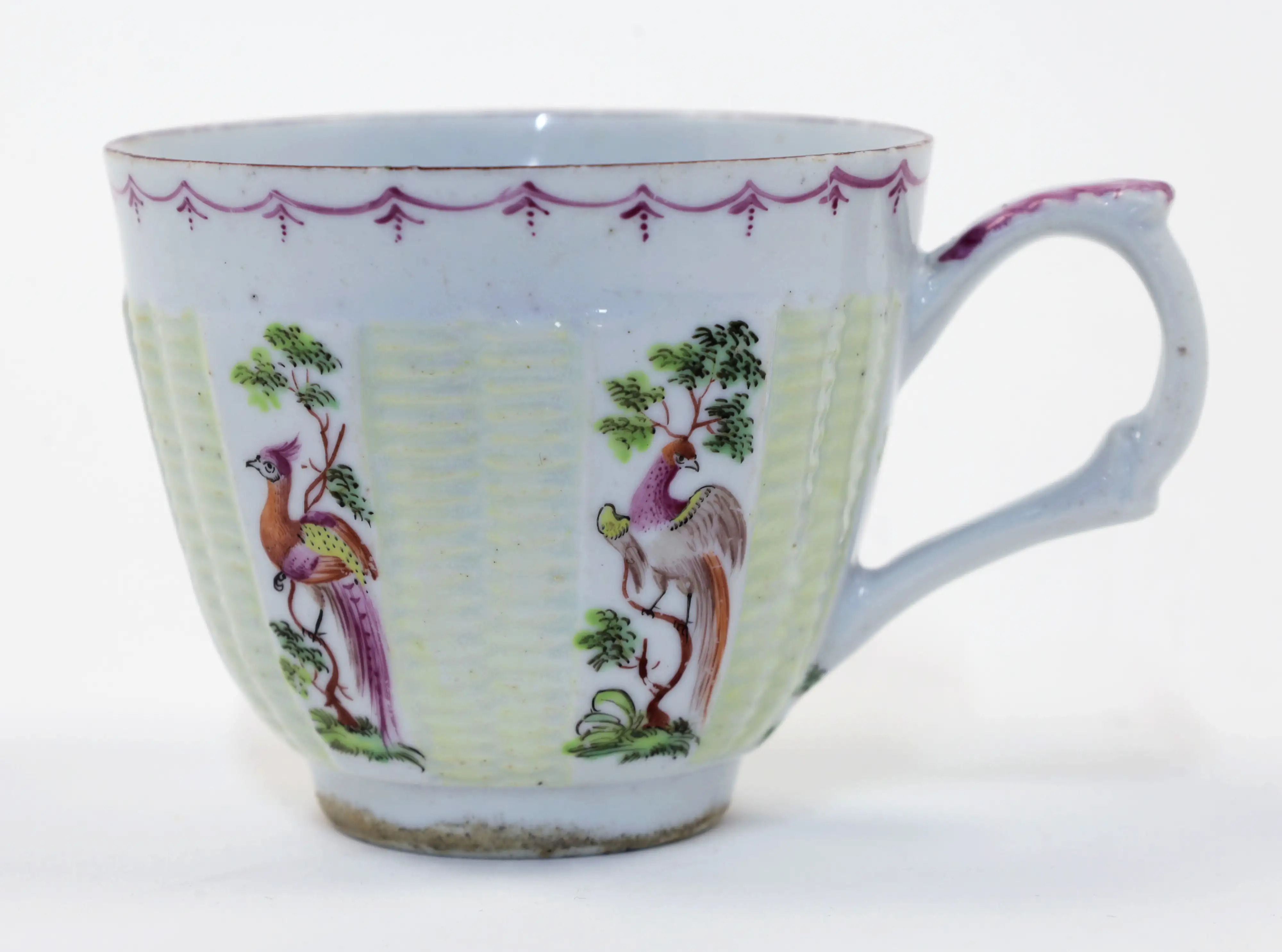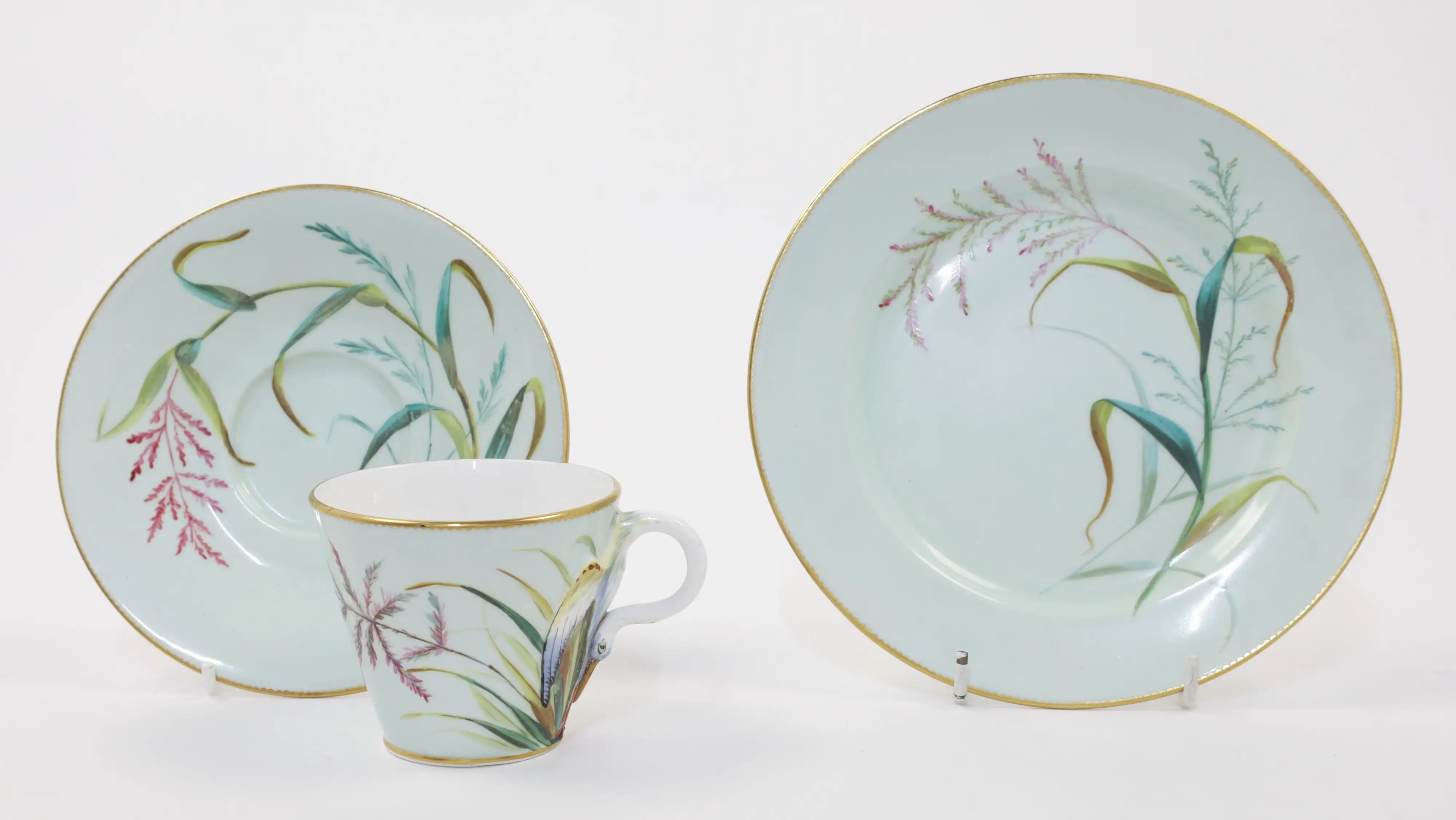There are very few things the average Brit enjoys more than a nice cup of tea or coffee. We’ve been sampling the pleasures of the herb and bean for well over three hundred and fifty years, and at least since the eighteenth century there have been a multitude of factories in the British Isles producing porcelain vessels for our delicious hot drinks, from soft-paste at Chelsea, Derby and Longton Hall to soapstone at Worcester and Liverpool and hard-paste at Plymouth and Bristol. This provides the collector of British tea and coffee cups and saucers with a wide range of shapes, tastes and decorations to explore and select, with neither one nor the other to be considered more, or less, worthy of acquisition.
Lot 4: A Chelsea porcelain bell-shaped cup and saucer, c.1754.
Seek early examples
Some of the oldest and longest running factories in Great Britain include the venerable names of Bow (founded c.1747), Chelsea (founded c.1745), and Derby (founded c.1750). Where possible the collector should seek out the earlier 18th century examples of these factories’ output, as they will naturally be rarer and often very finely manufactured, due to these factories being in direct competition with imported Chinese porcelain and the output of early European factories such as Meissen and Sèvres.
Lot 11: A Bristol (Champions) cup and saucer and a cup with pseudo-Meissen crossed swords mark.
Marks – when to care and when not
Collectors today can enjoy the enormous benefit provided by the research and compilation of books on British factory marks by the likes of J. P. Cushion, Geoffrey Godden, and Judith Miller, and consult the often-extensive lists of the factory marks one might expect to find from various cups and saucers. This should be the first place to look when examining a cup and saucer, but do not despair if you do not find one, as not every piece made by a factory bears the factory mark. In these instances, look to the decoration and shapes and the type of porcelain for clues. For more information on porcelain marks, see our guide.
Look out for named decorators
Some factories enjoyed the work and star power of independent decorators, such as James Giles at Worcester and Thomas Pardoe at Bristol, Swansea, and Nantgarw. Often the decorators left their own (literal) mark on their works, so keep an eye out for pieces bearing their seal, as they will bring an extra level of value to the items.
Lot 5: A rare Longton Hall porcelain coffee cup with label for the Billie Pain collection.
A note on Collection labels
The presence of a old collection label on an item can be an exciting prospect for new collectors, an indication of the quality of the item that it should have been owned by a collector and documented as such. Equally, antiques traders and shops often place their own labels on items, again to demonstrate to prospective buyers that the item was a worthy addition to their stock. However, collections vary in importance, and so it is always best to do some research into the name and/or institution, as it may not always add as much value to the item in question as one might think.
Lot 48: An unusual E. F. Bodley trip of a tea cup, saucer, and cake plate.
Buy what appeals to you
To finish on a more poetic note, the great beauty of British-made cups and saucers is the sheer variety of forms and decoration available, from the 18th century plain white moulded forms in imitation of Chinese and early European porcelain, to the opulent and extravagant decoration found in the early-to-mid 19th century, and the unusual designs found in the latter 19th century moving towards modernist tendencies. And with the market being more accessible now than ever before, there is very little barrier for first-time buyers to get involved and acquire the pieces that speak to them. For a great place to start your collection, take a look at Roseberys’ Traditional Home auction on the 31st July.


